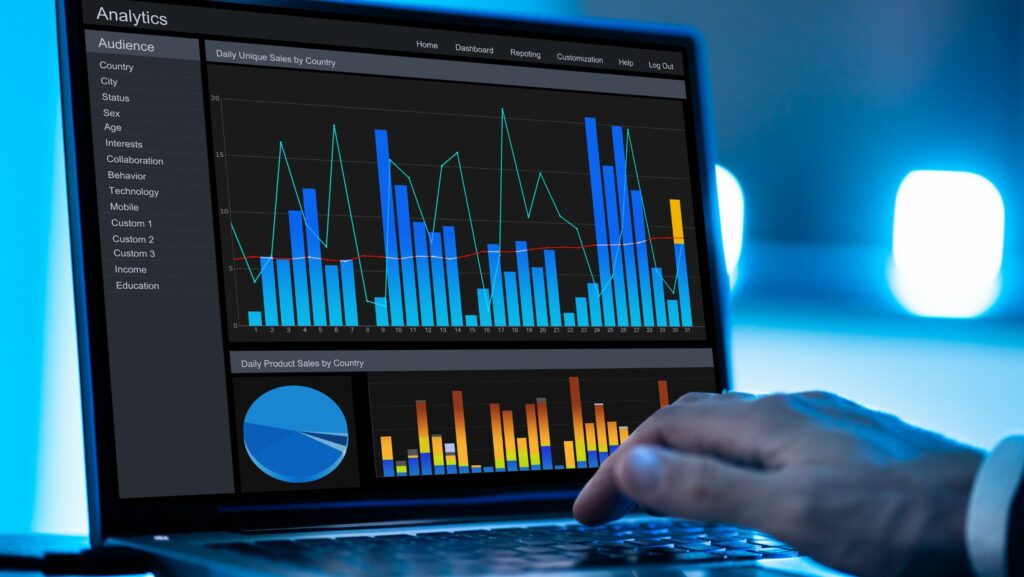In the digital age, data’s become the lifeblood of business. But to truly harness its power, it’s essential to understand the nuances of data science. Two key terms often bandied about are ‘data analysis’ and ‘data analytics’. While they may seem interchangeable, they’re not.
Data analysis and data analytics, though closely related, serve different purposes and require distinctive skill sets. This article aims to demystify these terms, shedding light on their unique roles and significance in the data-driven world.
So, whether you’re a budding data scientist, a business professional, or simply an inquisitive reader, let’s dive into the intriguing world of data analysis and data analytics.
Data Analysis VS Data Analytics
 Data Analysis refers to an overarching method incorporating various tactics and strategies for inspecting, cleansing, transforming, and modelling data. Its primary goal resides in deciphering meaningful information, offering conclusions, and supporting decision-making procedures. This process is symbiotic with highlighting useful information, suggesting conclusions, and supporting informed decision-making. For instance, a business may embark on a data analysis project to deduce whether a product pricing change correlates with an uplift in sales.
Data Analysis refers to an overarching method incorporating various tactics and strategies for inspecting, cleansing, transforming, and modelling data. Its primary goal resides in deciphering meaningful information, offering conclusions, and supporting decision-making procedures. This process is symbiotic with highlighting useful information, suggesting conclusions, and supporting informed decision-making. For instance, a business may embark on a data analysis project to deduce whether a product pricing change correlates with an uplift in sales.
What Is Data Analytics?
On the contrary, Data Analytics is a focused subsection of data analysis. It employs more complex techniques and methods, such as data mining and predictive modelling, to derive valuable insights from collected information. Insights born from data analytics enable organizations to optimize performance, predict trends, and make data-driven decisions. A telecom company, for example, might employ data analytics to predict customer churn rates and improve their retention strategies.
Key Differences Between Data Analysis and Data Analytics
 Keeping the broad overview in mind, it’s imperative to underscore the core contrasts that differentiate data analysis from data analytics. Not only do they diverge in their goals and objectives, but the necessary tools, techniques, and skill sets vary as well.
Keeping the broad overview in mind, it’s imperative to underscore the core contrasts that differentiate data analysis from data analytics. Not only do they diverge in their goals and objectives, but the necessary tools, techniques, and skill sets vary as well.
Data analysis typically aims at examining, cleaning, and transforming raw datasets, enabling the uncovering of useful information to support effective decision-making. Instances of these might include identifying trends or anomalies within the data to assist in business strategy formation.
Conversely, data analytics seeks to interpret complex data sets to provide actionable insights, typically for problem-solving or improving performance. Say a business wants to predict future sales trends; data analytics serves in providing insightful predictions that drive strategic planning.
Tools and Techniques for Data Analysis
 As for the tools and techniques, data analysis primarily employs statistical tools and methods to understand past patterns within the data. For instance, software like Excel and SPSS are commonplace in data analysis for their ease in manipulating and analyzing datasets.
As for the tools and techniques, data analysis primarily employs statistical tools and methods to understand past patterns within the data. For instance, software like Excel and SPSS are commonplace in data analysis for their ease in manipulating and analyzing datasets.
However, data analytics involves advanced techniques such as machine learning or data mining, often necessitating the use of robust programming languages such as R or Python. Using these, data analysts can sift through complex datasets to uncover deeper trends and establish predictive models.
Required Skill Sets
Data analysis practitioners typically possess a strong foundational understanding of statistics and a knack for data interpretation. They primarily need to master managing and manipulating data, often through Excel or other similar software.
Contrastingly, data analytics professionals generally boast a comprehensive skill set, including programming knowledge, algorithm understanding, and proficiency in big data platforms. They’re adept in tools like R, Python, or Hadoop to parse vast, intricate datasets and derive sophisticated insights. Handling these complexities and delivering actionable intelligence stands as a hallmark of the data analytics sector.
Applications and Use Cases
In respect to the real-world and business domain, data analysis and data analytics prove valuable in various scenarios.
Data Analysis in Real-World Scenarios
Let’s examine data analysis applications. Consider a healthcare setup. Doctors rely on data analysis to interpret patient records. There, examination of vital statistics, lab results, and medical histories helps in accurate diagnoses.
In retail, managers examine sales data to identify purchasing patterns. The analysis could reveal popular products and prime shopping times. Such insights feed into inventory management and promotional activity planning.
Data analysis refines our understanding of environmental patterns. Weather agencies examine meteorological data to predict weather patterns. These predictions assist people in planning their activities and protect them from potential weather hazards.

